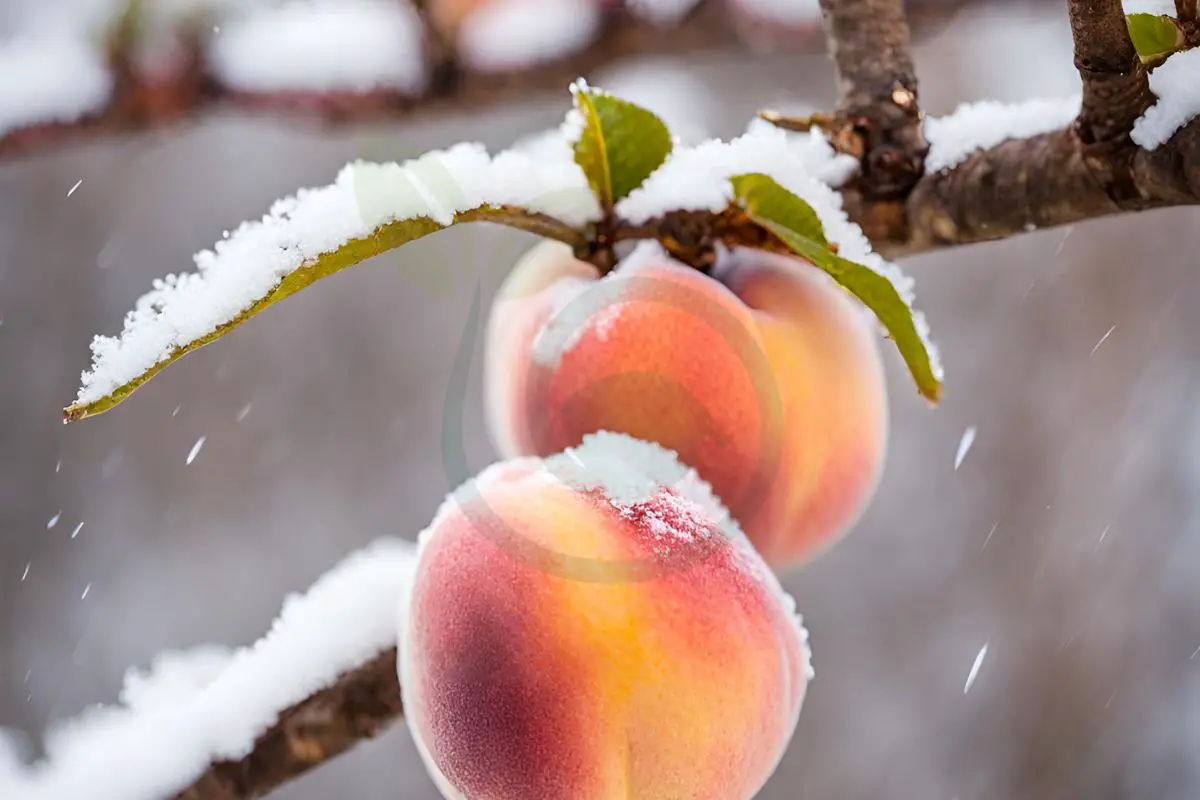Are you tired of seeing your beloved peach trees suffer or even perish due to unexpected freezes? We've got your back! In this post, we'll dive into effective strategies and tips on how to protect your peach trees from frosty weather. From simple DIY methods to more advanced techniques, we'll cover everything you need to know to safeguard your fruit-bearing beauties. Say goodbye to worrying about winter's icy grip wreaking havoc on your orchard. Get ready to arm yourself with the knowledge and tools necessary to ensure that when the cold strikes, your peach trees remain safe and sound from disease.
Key Takeaways
- Act Early: Start frost protection measures before the blooming season to safeguard peach trees from potential damage.
- Tailored Protection: Understand the unique biology of peach trees to implement specific frost protection strategies effectively.
- Timing is Key: Prevent early blooming by controlling environmental factors to avoid vulnerability to frost.
- Layered Defense: Utilize a combination of strategies for late frost protection to shield blooming peach trees from sudden temperature drops.
- Holistic Approach: Implement comprehensive frost protection strategies that include both proactive and reactive measures for optimal tree care.
- Winter Readiness: Prepare peach trees for winter by wrapping them securely and ensuring they are in good health to withstand harsh conditions.
Importance of Frost Protection
Frost Damage Effects
Frost can harm peach trees by causing their leaves to wilt and turn brown. When temperatures drop, peach tree buds may die, leading to reduced fruit production and quality. Protecting peach trees from frost damage is crucial for maintaining a healthy orchard and ensuring a successful harvest.
One common effect of frost on peach trees is the browning and wilting of leaves due to the cold temperatures. Freezing conditions can be detrimental to the buds on the tree, potentially resulting in poor fruit development or even no fruit at all. Farmers rely on protecting their peach trees from freeze to avoid these negative consequences that impact both yield and quality.
Critical Temperatures
Peach trees are vulnerable to frost damage when temperatures fall below 28°F (-2°C). The susceptibility varies depending on the growth stage; therefore, understanding critical temperatures during different stages of growth is essential for safeguarding peach trees against freeze damage. By knowing when specific growth stages are most at risk, farmers can implement protective measures effectively.
Knowing how temperature affects each stage of a peach tree's development allows growers to take appropriate action before potential harm occurs. For example, early bloom stages are more sensitive than dormant periods; thus, protective strategies such as covering plants or using heaters should be applied accordingly.
Importance for Harvest
Protecting peach trees from freeze plays a vital role in securing a successful harvest season without significant crop loss. Frost damage not only impacts current yields but also has financial implications for farmers due to reduced marketable fruits or complete loss of crops. Implementing proper protection methods safeguards both the quantity and quality of the harvest.
Ensuring that peach trees are shielded from freezing conditions helps maintain a steady supply of high-quality peaches for consumers while supporting farmers' livelihoods through consistent yields year after year.
Understanding Peach Tree Biology
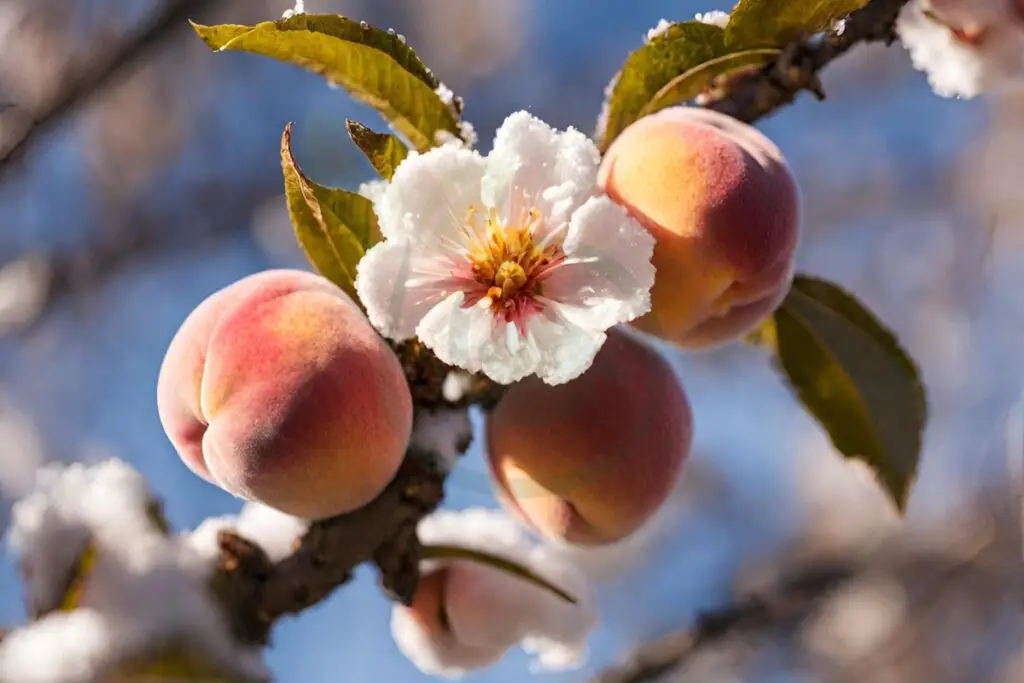
Early Budding Impact
Peach trees that bud early face a higher risk of frost damage, especially from late spring frosts. This vulnerability stems from the fact that early budding makes the trees more susceptible to sudden drops in temperature. By understanding this impact, growers can take proactive measures to protect their peach trees. For instance, implementing strategies such as covering the trees during frost warnings or using irrigation to mitigate cold damage can be crucial.
On the flip side, late-budding peach trees are less likely to suffer severe damage from freezing temperatures since they avoid budding during periods when frost is still a threat. This natural timing mechanism helps them escape potential harm and ensures better survival rates during unexpected cold snaps.
Cold Weather Survival
The ability of peach trees to survive cold weather conditions lies in their dormancy phase. During dormancy, these trees enter a state of rest where metabolic activities slow down significantly. This slowdown allows them to conserve energy and withstand harsh winter weather effectively. Moreover, adequate winter chilling is vital for ensuring that peach trees break dormancy at the right time in spring without being prematurely triggered by warm spells.
In essence, peach tree biology equips these plants with innate defenses against freezing temperatures through mechanisms like dormancy and timely budding cycles. Growers who grasp these biological aspects can make informed decisions on protecting their orchards from freeze events.
Preventing Early Blooming
Temperature Control
Implementing temperature control measures is essential in safeguarding peach trees from freeze damage. By using protective covers or structures, a microclimate can be created around the trees, shielding them from extreme cold. It's crucial to regularly monitor and adjust these temperature control methods based on weather forecasts to ensure optimal protection for the peach trees.
To protect peach trees effectively, it's important to understand how preventive pruning plays a significant role. Pruning the trees before winter helps reduce the risks of frost damage by eliminating dead or damaged branches that could serve as entry points for frost-related issues. Proper pruning techniques aid in promoting airflow within the tree canopy and prevent excessive moisture accumulation, which can further protect against freezing temperatures.
Preventive Pruning
Pruning your peach trees ahead of winter is like giving them a protective shield against potential freeze threats. By removing dead or damaged branches through pruning, you are essentially closing off possible vulnerabilities where frost could penetrate and harm your tree during colder periods. This preventive measure ensures that your peach tree stands strong against freezing conditions.
Strategies for Late Frost Protection
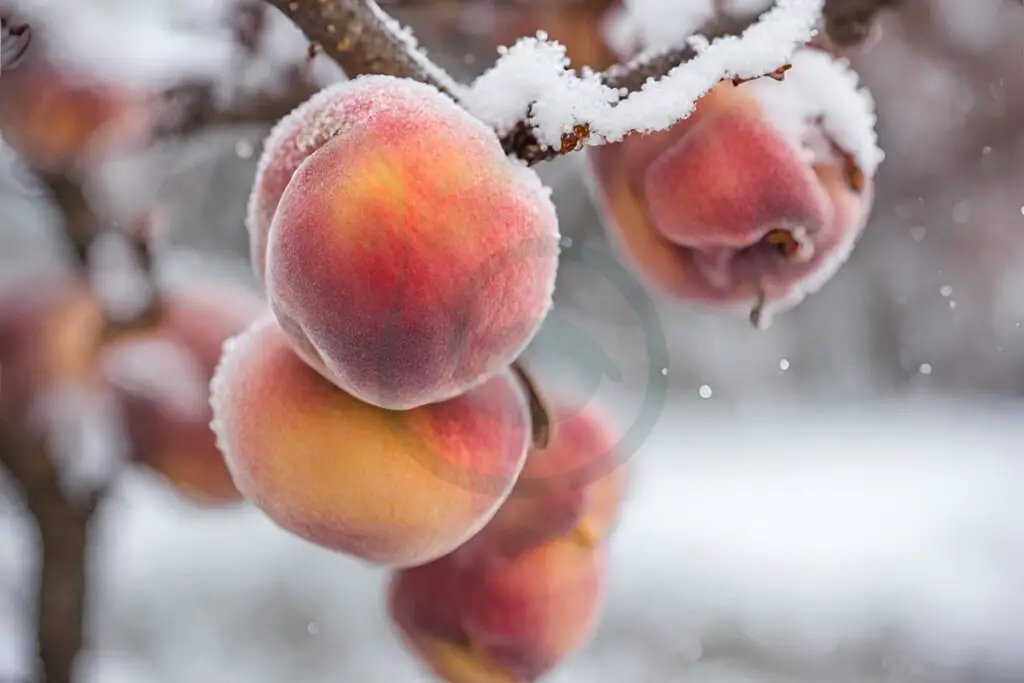
Covering Techniques
Maintaining an ideal temperature range is crucial to safeguard peach trees from freezing temperatures. These trees flourish best when the thermometer reads between 32°F (0°C) and 45°F (7°C). Drastic shifts in temperature can harm the health of peach trees, making it vital to shield them during frosty spells.
To shield peach trees effectively, employing various methods is key. One effective approach involves utilizing frost blankets or row covers as a physical barrier against frost damage. Applying mulch around the tree's base aids in insulating the root system from extreme cold, offering added protection during late frosts.
Water Spray Method
The water spray method is another valuable technique for protecting peach trees from freeze damage. This method entails spraying water on the trees when temperatures hover slightly below freezing. The sprayed water forms a protective ice layer that acts as insulation for buds, shielding them from potential harm due to frostbite.
Protecting Blooming Trees from Hard Freeze
Blossom Protection
Protecting peach tree blossoms is vital for a successful fruit harvest. Covering blossoms with protective materials shields them from frost damage. Timing plays a crucial role in safeguarding these delicate blooms, as implementing protection measures too early or too late can be ineffective.
Properly covering blossoms with materials like burlap or frost cloth can create a barrier against freezing temperatures, preserving the flowers and ensuring pollination. For instance, wrapping individual branches with protective material before an expected freeze can shield the emerging buds effectively.
Saving Fruit
When facing potential frost damage, safeguarding fruit clusters becomes paramount to prevent loss. By covering fruit clusters with protective materials such as blankets or tarps, you create insulation that shields them from harsh temperatures. Regular monitoring of weather forecasts is essential to intervene promptly when freezing conditions are predicted.
Intervening timely by employing protection methods like using sprinklers to coat trees with ice during freezes can help insulate the fruit and protect it from severe cold snaps. This method forms a layer of ice around the fruits, which acts as insulation against colder temperatures.
Comprehensive Frost Protection Strategies
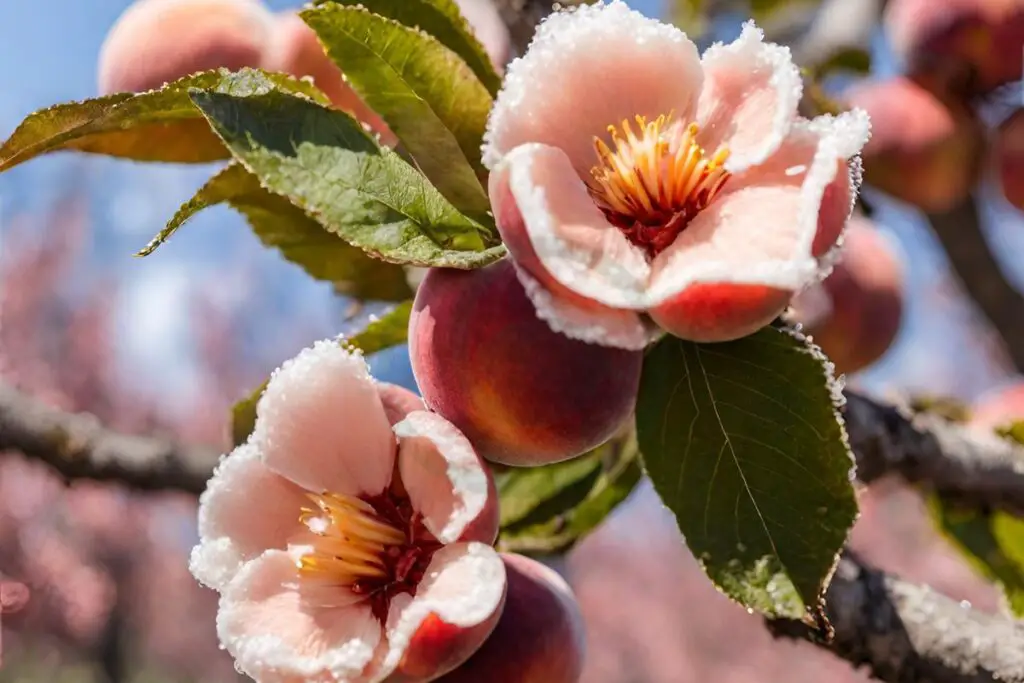
Insulating Root Systems
Insulating peach tree root systems is crucial for safeguarding them against freezing temperatures. By applying mulch around the base of the tree, you provide insulation that helps retain soil warmth. This simple yet effective method shields the roots from extreme cold and promotes their health during harsh weather conditions. Insulated root systems contribute significantly to the overall survival of peach trees in cold climates.
To protect your peach tree's trunk, consider wrapping it with burlap or other protective materials when temperatures drop below freezing. This practice prevents bark splitting, which can be detrimental to the tree's health and growth. By ensuring that the trunk remains intact and undamaged, you help maintain the vascular system of the tree, allowing it to continue transporting essential nutrients efficiently.
Preparing for Winter
Defense Against Insects
Peach trees are vulnerable to insects during the cold season, as the freezing temperatures weaken them. By implementing pest control measures before winter sets in, you can protect your peach trees from insect infestations. Regularly inspecting and treating the trees will help prevent any potential pest-related issues.
To ensure the health of your peach trees during winter, it's crucial to focus on defense against insects. Cold weather can make these trees more susceptible to infestations, which is why taking preemptive action is essential. For instance, applying natural remedies or seeking guidance from a local university extension service can be beneficial.
Fall Irrigation
Adequate fall irrigation plays a vital role in preparing peach trees for the harsh winter conditions ahead. Proper hydration helps these trees withstand freezing temperatures by ensuring they are healthy and well-nourished. Controlled irrigation practices need to be followed to avoid excessive moisture accumulation that could lead to frost damage.
Fall irrigation is key. By providing sufficient water supply during this period, you equip the tree with strength and vitality needed for surviving the cold months.
Wrapping for Winter
Necessity of Wrapping
Wrapping peach trees is crucial to safeguard them from freeze. Wrapping acts as insulation, shielding the tree from harsh cold temperatures. It plays a vital role in preventing bark splitting and other winter-related damages that can harm the tree's health. Without proper wrapping, peach trees are vulnerable to freezing conditions, which can stunt their growth and fruit production.
To protect peach trees effectively, it is essential to understand the significance of wrapping methods. Various techniques can be employed to shield peach trees from freeze damage during winter months. One common method involves using burlap or frost blankets wrapped around the tree trunk in a spiral fashion. This technique helps create a barrier against extreme weather conditions while allowing some airflow for ventilation purposes. The key is to secure the wrapping material firmly but not too tightly, ensuring that it provides adequate protection without restricting necessary air circulation.
Wrapping Methods
When considering how to protect your peach trees from freeze, opting for suitable wrapping materials and methods is crucial for their survival through winter. Burlap or frost blankets offer excellent protection by insulating the tree trunk effectively against freezing temperatures without suffocating it with excessive tightness. By carefully winding these materials around the trunk in a spiral pattern, you create a protective shield that mitigates the risk of cold-induced damages such as frost cracks or sunscald.
Ensuring Healthy Harvest
Comprehensive Care
Providing comprehensive care for peach trees year-round is vital for their health and resilience. Proper nutrition, regular pruning, and effective pest control measures all play a crucial role in enhancing the tree's ability to withstand cold weather, including freezing temperatures. By ensuring these aspects are well-maintained, peach trees are better equipped to survive frosty conditions. For example, applying a balanced fertilizer in spring promotes healthy growth and strengthens the tree against potential freeze damage.
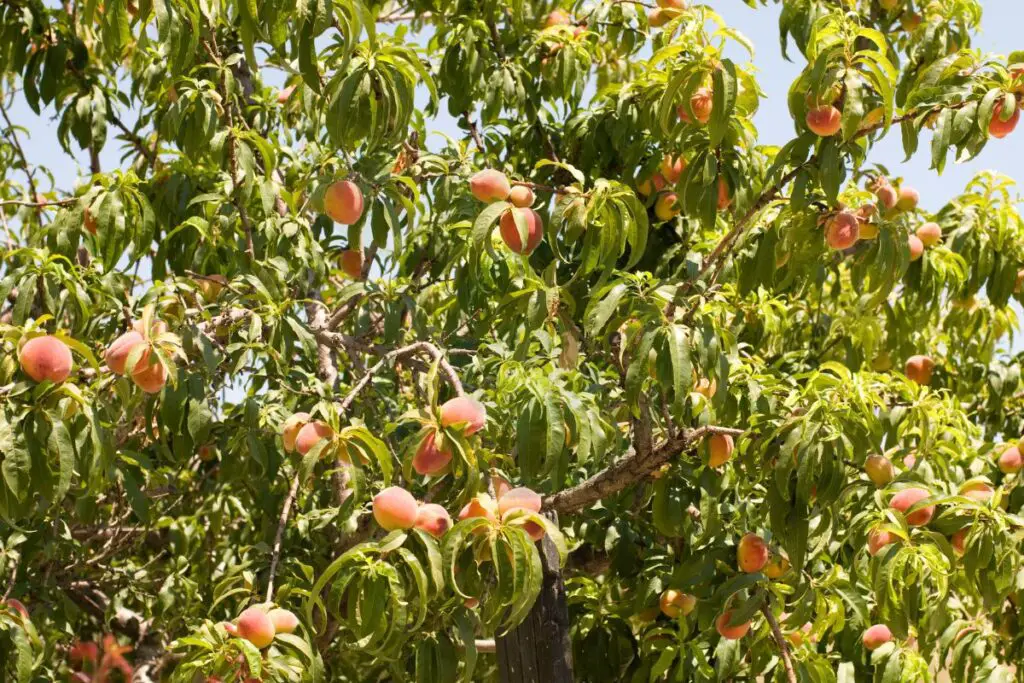
Consistent monitoring and maintenance practices are essential components of protecting peach trees from freezing temperatures. Regularly checking weather forecasts allows growers to anticipate impending freezes and take preventive actions promptly. Timely upkeep of protective measures such as covers or wraps ensures they remain intact and functional when needed most. Adapting protection strategies based on evolving weather patterns is key to effectively safeguarding peach trees from frost damage over time.
Monitoring and Maintenance
Keeping an eye on changing weather conditions is crucial for safeguarding peach trees against sudden freezes that can harm them. By staying informed about upcoming temperature drops through regular monitoring of forecasts, growers can prepare adequately by implementing protective measures beforehand. This proactive approach helps mitigate the risks associated with unexpected cold snaps that could endanger the fruit-bearing capacity of the tree.
Adjusting protection methods according to varying weather patterns is essential for successful preservation of peach trees during frost-prone periods. For instance, modifying coverings or adding extra layers when extreme cold spells are forecasted can provide additional insulation against freezing temperatures. Being attentive to shifts in climate trends enables growers to tailor their care routines accordingly, ensuring optimal defense mechanisms are in place when needed most.
Final Remarks
You've learned how crucial it is to shield your peach trees from frost, especially during vulnerable blooming stages. Understanding the biology of your trees and implementing preventative measures can make all the difference in ensuring a bountiful harvest. From delaying blooming to employing comprehensive protection strategies, you're now equipped to safeguard your trees effectively.
Now, roll up your sleeves and get ready to put these insights into action. Winter is coming, and your peach trees are counting on you to provide them with the care they need. By following these guidelines, you're not just protecting your trees; you're nurturing a future filled with juicy, ripe peaches. Get out there and show that frost who's boss!
Frequently Asked Questions
How does frost affect peach trees?
Frost can damage peach tree buds, flowers, and young fruit, leading to reduced yields or crop loss. It's crucial to protect your peach trees from frost to ensure a successful harvest.
What are some strategies for late frost protection?
Late frost protection strategies include using row covers, applying irrigation methods like sprinkling water on the trees during freezing temperatures, using heaters or incandescent lights, and utilizing wind machines to circulate air.
Why is it important to prevent early blooming in peach trees?
Preventing early blooming helps avoid exposing blossoms to potential late frosts that could damage them. By controlling the timing of bloom initiation through proper care and management practices, you can safeguard your peach crop.
How can I prepare my peach trees for winter?
To prepare your peach trees for winter, make sure they are well-watered before dormancy sets in. Prune any damaged branches and apply a layer of mulch around the base of the tree to insulate roots from extreme cold temperatures.
Should I wrap my peach trees for winter protection?
Wrapping your peach trees with burlap or tree wraps can provide additional insulation against harsh winter conditions. This extra layer helps shield the trunk from temperature fluctuations and prevents bark-splitting due to freeze-thaw cycles.
Image Source: Paid image from CANVA

